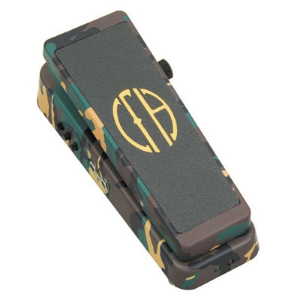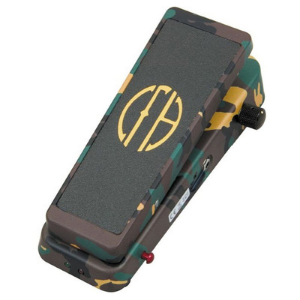- Home
- Instruments
- Gear
- Recording
- Lessons
- Reviews
- Blog


| Controls: |  |
| Features: |  |
| Performance: |  |
| Value: |  |
When you think wah pedal, chances are Dunlop's original Cry Baby springs to mind – and rightly so. It’s an absolute legend in the world of wah! However, this famous pedal has spurred plenty of offshoots and signature models, such as the Dimebag Signature Cry Baby – designed in conjunction with the late, great Dimebag Darrell – which we are looking at today. Does the legendary endorsement make this edgy wah pedal worthy of the significant price rise? Let’s dive in and find out…
 Features
FeaturesBefore we get into the main features of the pedal, we have to mention the style. With a similar form factor as the original, the addition of the cool camo finish and custom Dimebag graphics is pretty badass!
Where the original Cry Baby has no controls other than the foot pedal rocker, this signature version is much more versatile. It features an extended sweep range control to offer more lows and highs, which allows you to create some insanely funky chops. That means you can cultivate a high-pitched effect that really cuts through a mix, as well as a lower frequency sweep.
You also have the ability to precisely shape your sound more than any previous model by using the variable Q control and finetune control, while the volume boost is a handy feature for live performances.
These are the kind of things that make this signature model so versatile when compared to the original and many other popular wah pedals. Elsewhere, LED indicators on the heel side show when the wah and volume boost are engaged, which could come in handy when gigging with poor monitors.

Starting with the obvious, your main control is the pedal rocker switch. That's what Dunlop does so well, so this was always going to be spot on. What separates this from other Cry Babies is that, on one side of the pedal, you have a six-way range selector knob for setting the cut-off frequency of the wah effect.
On the other side, you have the variable Q control that lets you alter the sharpness of the pedal’s bandpass, with the finetune control nearby allowing you to shape the tone of the toe-down position. The volume control lets you set the amount of gain you want to add when engaging the boost button.
Dunlop has also added an extra input jack on the left side of the pedal, so you can go in and out just on that one side. That means, if you aren't using the pedal in a loop, you don't need to put a cable around it, so there is less chance of it ending up under the pedal. A small detail, but it's a nice touch.
Dimebag himself suggested this pedal is like a wah that’s been hot-rodded, and we happily agree with this. Of course, with a namesake as legendary as Dimebag Darrell, this Cry Baby absolutely kills it when it comes to metal – but it's not limited to one style.
The amount of control you get over the wah effect is so rare, whatever style you play will benefit from the versatility this one offers. This pedal's six-way frequency selector combined with the variable Q and finetune controls give you the ability to custom shape your sound like no other wah pedal.
The volume boost is a nice way to get that little bit extra, but use it wisely – if used when not needed, things can get very noisy. Sometimes when a pedal is so good, it's easy to overkill, and too much will always be too much. The bottom line is that it sounds great whatever you are playing, from funk to metal, while stripping it back a little gives you some gorgeous blues tones too.
There are two questions we have to answer here. Firstly, is this a great pedal on its own merit? The answer is a resounding yes. Secondly, is this signature model worth splashing out on when compared to the original Cry Baby? Absolutely. Don't let the Dimebag endorsement fool you into thinking it’s just for metalheads – if you get good use from a wah pedal, this versatile monster is worth checking out.
For more info about the Dimebag Signature Cry Baby, click here.
For more wah-wah pedals, click here.

Reader Interactions